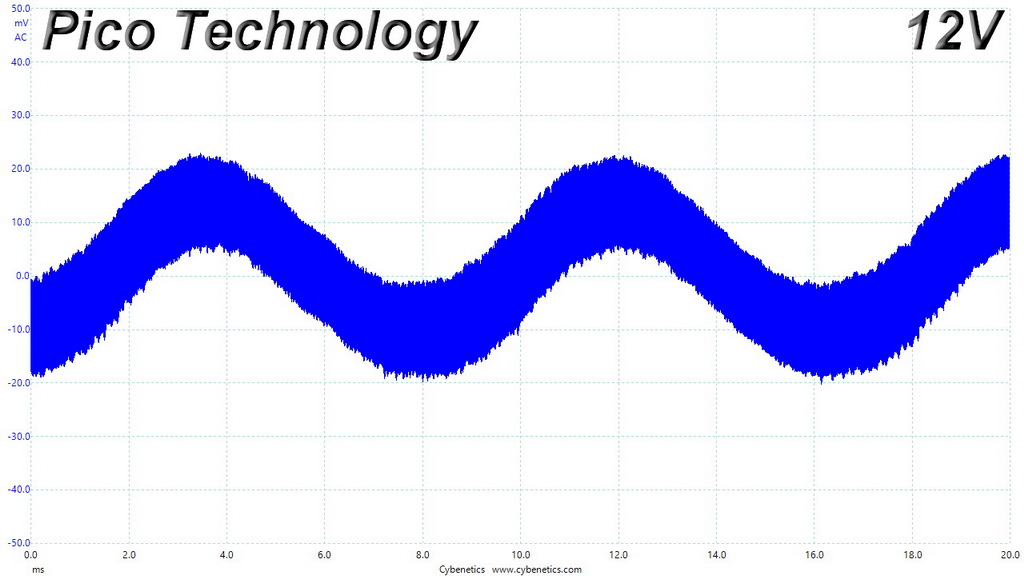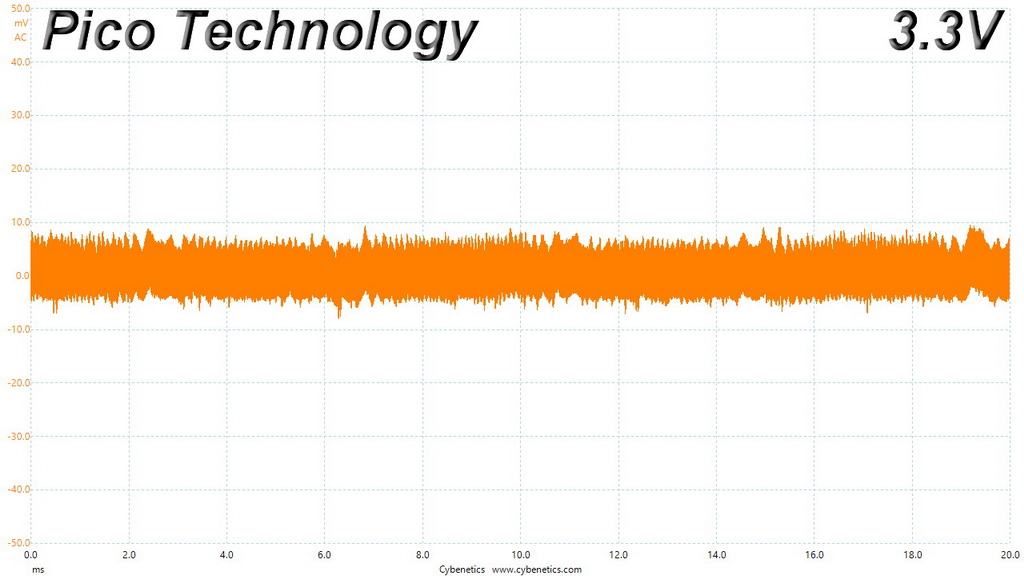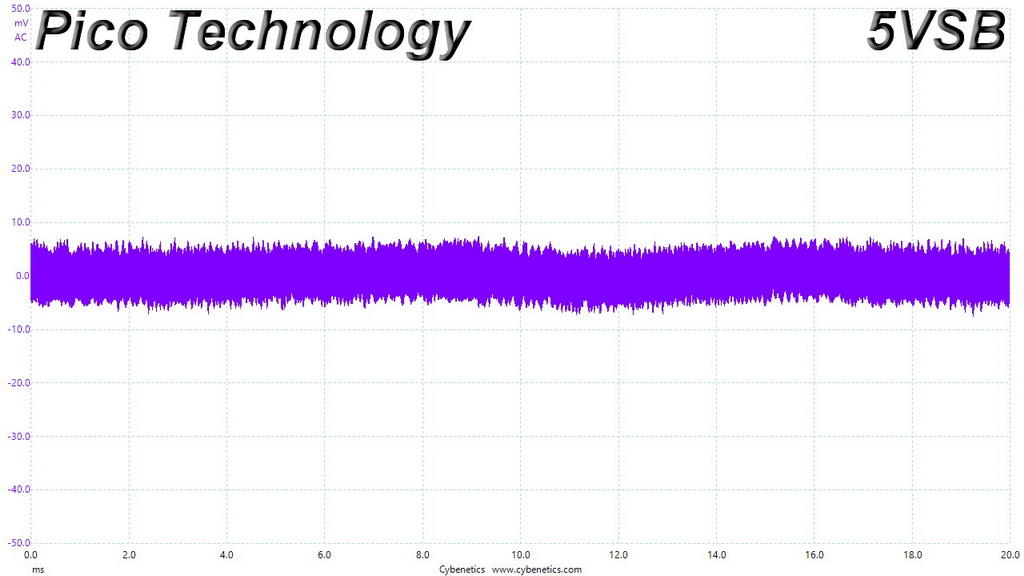Corsair CX450 PSU Review: Two Flavors, Tested and Compared
Why you can trust Tom's Hardware
Ripple Measurements
To learn how we measure ripple, please click here.
The following table includes the ripple levels we measured on the CX450’s rails. The limits, according to the ATX specification, are 120mV (+12V) and 50mV (5V, 3.3V and 5VSB).
Corsair CX450 - CWT
| Test | 12V | 5V | 3.3V | 5VSB | Pass/Fail |
|---|---|---|---|---|---|
| 10% Load | 15.3mV | 8.3mV | 9.2mV | 6.2mV | Pass |
| 20% Load | 20.0mV | 8.2mV | 9.9mV | 7.0mV | Pass |
| 30% Load | 19.2mV | 8.2mV | 10.0mV | 7.3mV | Pass |
| 40% Load | 19.6mV | 9.2mV | 10.5mV | 7.8mV | Pass |
| 50% Load | 32.5mV | 9.1mV | 11.4mV | 8.2mV | Pass |
| 60% Load | 32.3mV | 8.5mV | 12.0mV | 8.5mV | Pass |
| 70% Load | 33.9mV | 10.4mV | 17.6mV | 8.7mV | Pass |
| 80% Load | 28.3mV | 11.3mV | 15.6mV | 11.5mV | Pass |
| 90% Load | 29.0mV | 12.3mV | 16.1mV | 12.1mV | Pass |
| 100% Load | 30.6mV | 12.6mV | 17.0mV | 14.1mV | Pass |
| 110% Load | 32.1mV | 13.5mV | 17.7mV | 16.3mV | Pass |
| Cros-Load 1 | 26.1mV | 7.3mV | 11.0mV | 8.7mV | Pass |
| Cross-Load 2 | 33.8mV | 13.7mV | 16.1mV | 12.2mV | Pass |
Corsair CX450 - Great Wall
| Test | 12V | 5V | 3.3V | 5VSB | Pass/Fail |
|---|---|---|---|---|---|
| 10% Load | 22.8mV | 7.4mV | 7.1mV | 6.5mV | Pass |
| 20% Load | 35.3mV | 8.8mV | 8.3mV | 7.0mV | Pass |
| 30% Load | 54.7mV | 10.0mV | 9.2mV | 7.6mV | Pass |
| 40% Load | 41.7mV | 10.6mV | 10.5mV | 8.1mV | Pass |
| 50% Load | 37.1mV | 12.1mV | 11.5mV | 9.0mV | Pass |
| 60% Load | 35.7mV | 14.4mV | 12.3mV | 9.8mV | Pass |
| 70% Load | 35.3mV | 14.8mV | 14.0mV | 11.1mV | Pass |
| 80% Load | 36.6mV | 14.7mV | 14.9mV | 12.8mV | Pass |
| 90% Load | 39.0mV | 15.6mV | 16.7mV | 14.6mV | Pass |
| 100% Load | 44.2mV | 17.9mV | 18.1mV | 14.9mV | Pass |
| 110% Load | 48.1mV | 20.0mV | 18.6mV | 20.1mV | Pass |
| Cross-Load 1 | 54.1mV | 13.9mV | 15.5mV | 10.7mV | Pass |
| Cross-Load 2 | 45.2mV | 14.8mV | 13.7mV | 15.7mV | Pass |
Comparison Graphs




The Great Wall-based unit's minor rails performed well. But ripple at +12V was higher than what we measured from CWT's model. That latter design served up excellent ripple suppression on all of its rails. To be sure, you don't often see 31 millivolt (mV) of ripple under full load at 47°C from a budget-oriented PSU.
Ripple Oscilloscope Screenshots - Great Wall
The following oscilloscope screenshots illustrate the AC (alternating current) ripple and noise registered on the main rails (+12V, 5V, 3.3V and 5VSB). The bigger the fluctuations on the screen, the bigger the ripple/noise. We set 0.01 V/Div (each vertical division/box equals 0.01V) as the standard for all measurements.
Ripple at Full Load




Ripple at 110 Percent Load




Ripple at Cross-Load 1




Ripple at Cross-Load 2




MORE: Best Power Supplies
MORE: How We Test Power Supplies
MORE: All Power Supply Content
Get Tom's Hardware's best news and in-depth reviews, straight to your inbox.
Current page: Ripple Measurements
Prev Page Transient Response Tests Next Page EMI Pre-Compliance Testing
Aris Mpitziopoulos is a contributing editor at Tom's Hardware, covering PSUs.
-
jpe1701 Oh thank you Aris, I've been waiting for a review of this. It's always low in price and tempting to recommend but there weren't any reviews.Reply -
Darkbreeze Why do both of the review summary boxes list the Great Wall version? Both the one on the front page and the last page are the same. Seems like you ought to include a summary box for both versions since there seems to be some major differences between them. And even more so since you seem to indicate the CWT version is the better unit, but only include a summary box for the Great Wall unit.Reply -
Darkbreeze I totally understand. No worries mate. Editorial has a bad habit of effectively pooping all over the independent contributors writing as well. Not surprising that they are doing so with your work, but I sure wish somebody in editorial would make a few changes to policy that keeps the finished product a bit more in line with what the contributor intended, which often they don't. In this case, it totally makes zero sense that they didn't leave it as you had it.Reply -
Rexper ReplyWe preferred CWT's version of Corsair's CX450, but that doesn't mean you should avoid Great Wall's
Not that we have a choice.
Great article, once again, Aris!
There is some controversy appearing relating to the fan bearings used in the CX450. JonnyGURU, who works at Corsair, claims both CX450 versions use a rifle bearing.
Unfortunately, we can't know for certain until someone dismantles the fan.
http://www.jonnyguru.com/forums/showthread.php?t=15943&page=2 -
Darkbreeze I don't think it even makes a tremendous amount of difference. Fan failure on power supplies due to bearing fatigue is the least of the issues I've usually seen in the past on older units. Plus, it's not terribly difficult to replace a PSU fan if you have at least of a modicum of common sense and don't possess four thumbs.Reply
If fan noise is the biggest worry, or bearing failure over the long term, then I'd say these are winners for the price point. Most would never hear them over the sound of the rest of the system in any case.